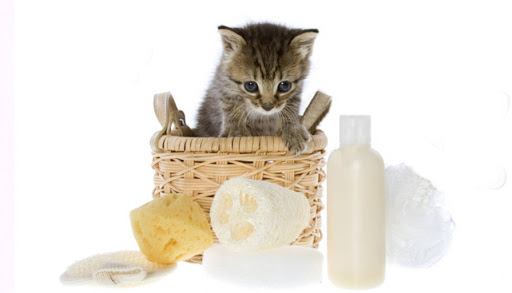It is crucial to figure out how to properly wash a cat so it does not become a local disaster for the owner and his pet. What should be the water temperature, what shampoo should be used for bathing, and what nuances should be taken into account to make your pet as comfortable as possible? You will learn about all this in our article.
Why is your cat scared of water?
Unlike dogs, who love to splash in water, cats rarely tolerate water and experience extreme stress during bathing.
Cats fear drowning and freezing because an air layer under their fur participates in body thermoregulation. The dry layer gives cats a feeling of warmth and comfort. Wet wool hardly protects the animal from freezing, which causes discomfort.
Video: why cats are afraid of water
How often and why should you wash your cat?
If its coat is heavily soiled or for preventive purposes, a cat should be bathed for fleas or other ectoparasites on its fur. In other cases, clean animals can care for their coats independently, carefully licking the dust from their fur. However, veterinarians advise bathing even those furry pets who have never left the apartment. It is necessary to protect the animal from germs brought in from the street on the soles of shoes or penetrating onto window sills through ventilated windows. Therefore, domestic cats are washed 5-6 times a year.
Moreover, the frequency of water procedures depends on factors such as the breed of the animal, its reaction to water, and its general condition. For example, long-haired breeds should be bathed more often than their short-haired counterparts. As for frequent bathing, it can damage the coat and lead to dry skin and dandruff.

What is the best way to wash cats?
Washing your cat with soap, shower gel, or human shampoo is not recommended, as it is tough to wash them off thoroughly, which can cause poisoning. It is essential to purchase a particular animal grooming product at a pet store with a different pH level and properly clean your pet’s skin and fur. In addition, special cat shampoo is designed so the animal can lick it off.

The first thing to consider when choosing a shampoo is the breed of the animal. For short-haired cats, selecting shampoos with surfactants and oils is better. After washing these products, your pet’s coat will become glossy, smooth, and shiny. And here, Maine coon, Persian. This option is not suitable for other long-haired cats because, after bathing, the hair will stick together unsightly, turning into sloppy icicles. Special shampoos are designed for fluffies and contain wheat protein and medicinal plant extracts.
How can you safely wash a cat for the first time?
If an adult cat is dipped into water for the first time without preparation, such bathing can lead to injuries for both the pet and its owner. It would be best to accustom the purr to water early. You can start bathing him within two weeks after his baby teeth are replaced. By this point, the animal will have time to adapt to the new environment and gain trust in its owner. Young cats get used to water procedures more quickly than adults and can even perceive them as a game. Accustoming to water should be gradual and can begin with washing the paws.

It is essential to ensure that the atmosphere during washing is calm. Excessive noise can frighten your pet. For bathing, a basin or bathtub filled with warm water is suitable, the level of which should reach the cat’s tummy. Cats are heat-loving creatures, so the optimal temperature for bathing them is 33-40 degrees. You can put a rubber mat on the bottom to prevent the paws from slipping. Especially aggressive cats wear special protective caps (anti-scratch caps) on their claws, which will help save the owner from wounds on his hands.

There is no need for special washcloths or other washing equipment; the procedure is done only with your hands. In this case, the cat should look at the wall. Could you ensure that water does not get into your ears or eyes? To protect your cat’s ear canal from accidental water penetration, it is enough to cover the ears with cotton swabs while bathing. After you complete the water procedures, please keep the animal wrapped in a towel for 10 minutes, then give it access to a warm place with an air temperature of at least 25 degrees.
Video: how to wash a cat, groomer tips




